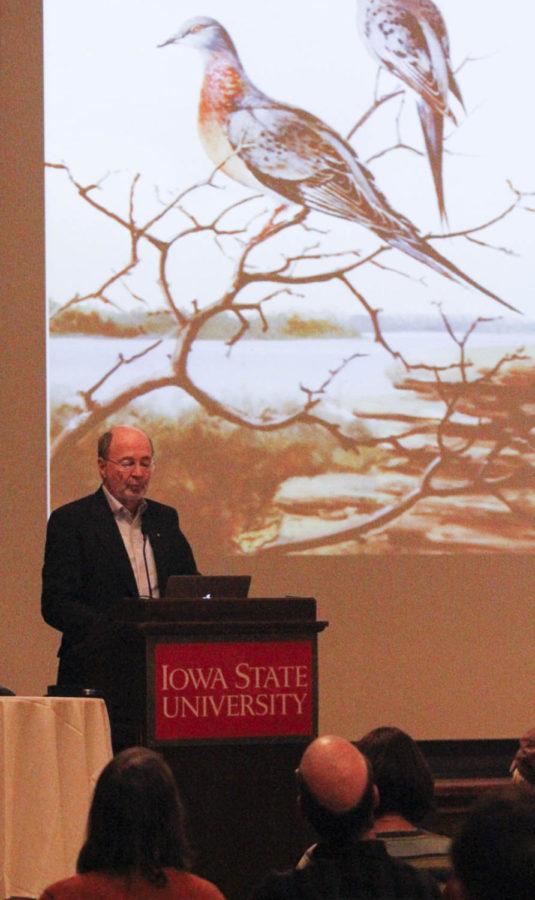Extinct passenger pigeon serves as reminder to learn from mistakes
March 7, 2014
As the 100th anniversary of the passenger pigeon is observed, lecturer Stanley Temple asked the audience at the March 6 lecture to remember the passenger pigeon and learn from past mistakes.
Temple, a senior fellow and science advisor with the Aldo Leopald Foundation and former Beers-Bascom professor in conservation in the department of wildlife ecology at the University of Wisconsin, spoke about the extinction of the passenger pigeon and how to prevent other species from meeting the same end.
“We must eliminate overkill,” Temple said. “All exploitation of wildlife must be sustainable. Endangered species’ protection must be strengthened, not weakened or eliminated … and existing protection must be enforced.”
Passenger pigeons were once the most abundant species of bird in North America and were hunted to extinction in a matter of decades. At their peak, there were 3-5 billion birds in the world. They were most closely related to the band-tailed pigeon of today, and there are thousands of firsthand accounts of these birds and their migrations.
“We didn’t learn very much [from their extinction],” Temple said. “We are still exploiting lots of wildlife species.”
The last passenger pigeon died Sept. 1, 1914, in the Cincinnati Zoo. The bird was named Martha and her body is on display in the Smithsonian Institute. A memorial to the passenger pigeon is located in Wyalusing State Park in Wisconsin.
Other bird and fish species that have been hunted to extinction include the Great Auk, the Labrador duck, the Carolina parakeet, the Eskimo curlew, blue pikes, Deepwater Ciscos, Longjaw Ciscos and Shortnose Ciscos, mostly due to hunting and fishing.
“We have salvaged some species,” Temple said. “Some can bounce back very quickly if we do the right thing.”
An example of a resilient species is that of the dickcissel, a bird species that was well on the way to extinction before Temple and his students stepped in. They found that dickcissels were being killed mostly in Venezuela where they had their winter roosting grounds.
“The famers were concerned about their crops,” Temple said. “They used crop dusters to spray pesticides over the fields … we convinced them to stop dusting if the population was stabilized.”
Temple’s efforts were successful and the population of dickcissels has remained stable.
However, that is only one species saved of many that are endangered.
Currently, 16,938 of the 44,838 known species in the world are endangered.
“[Extinction of a species] should be eliminated because it deprives future generations of natural resources,” Temple said. “There could be unexpected consequences to us. Furthermore, it’s morally wrong to cause the extinction of any species. It might cause unexpected consequences in [these species’] ecosystems and lead to further extinctions.”
The extinction of the passenger pigeon led to the start of modern conservationism with the Lacey Act of 1900, and the Migratory Bird Treaty Act of 1918, but it was “too little, too late.”
For more information, go to passengerpigeon.org, where a number of commemorative works are featured in memory of the passenger pigeon.
“We hope that a new generation will remember the passenger pigeon and be more careful in the future,” Temple said.







